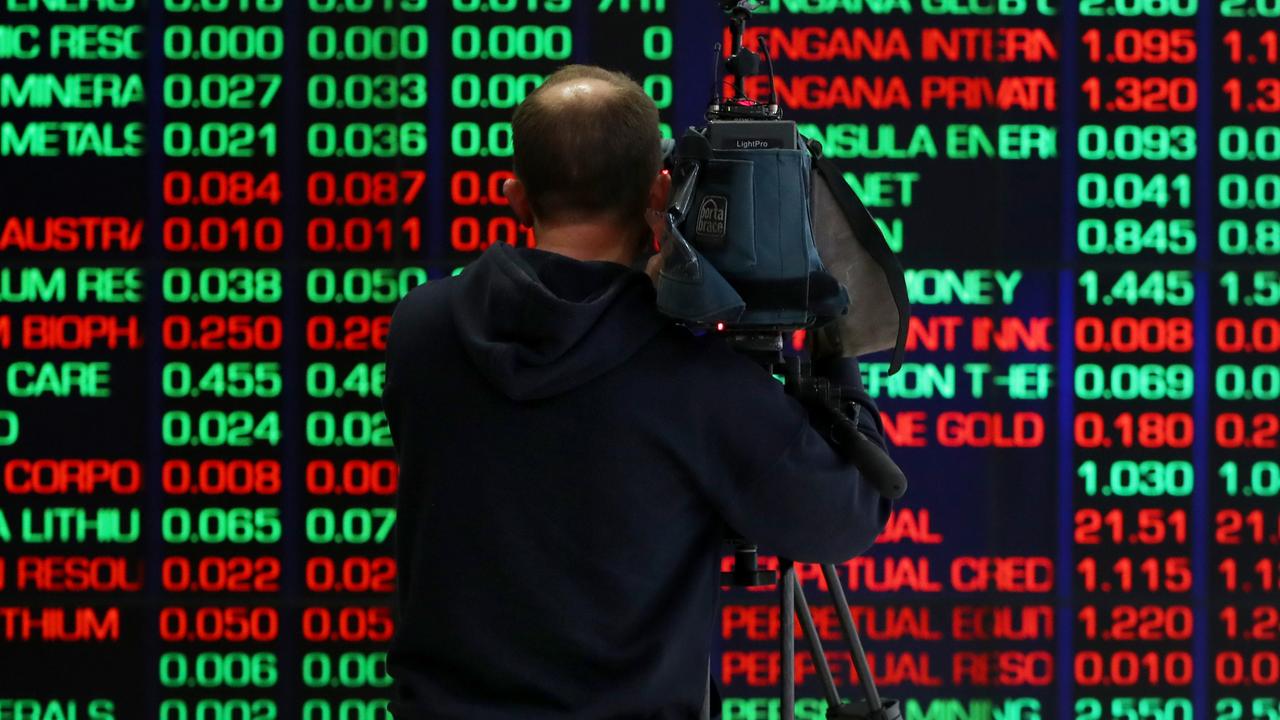Valuations in focus as rate cuts questioned
Valuations are back in the spotlight after the Australian sharemarket on Friday finished the week sharply lower than the record highs achieved in recent weeks.

Valuations are in the spotlight after the Australian sharemarket fell sharply from a record high.
After hitting 7847 points last week, the ASX 200 index fell as much as 3.2 per cent to a three-week low of 7591.4 points before rebounding to close the week at 7670.3 points.
Even after a strong intraday rebound on Friday, the ASX 200 lost 2.3 per cent for the week.
The worst week for Australian shares in the past six months came as higher than expected US inflation data boosted US bond yields, a lack of stimulus by China’s highly anticipated National People’s Congress hit iron ore prices, and bank shares dived on concern about high valuations.
The ASX 200 had risen 16 per cent from the end of October to last week’s high. Almost a third of that rise was attributable to a 27 per cent rise in the heavyweight banking sector, which accounts for almost 20 per cent of the sharemarket.
The rise in bank shares in recent months caught most analysts by surprise. But this week they doubled down on their concerns about the sustainability of stretched valuations in the sector.
On Tuesday UBS warned that “very optimistic earnings assumptions are required to justify the recent run-up in bank share prices. On Thursday, Macquarie Equities slashed its rating on ANZ, NAB and Westpac to underweight, matching its CBA rating. Banks were “trading at peak multiples without a clear fundamental reason”, according to Macquarie analyst Victor German.
But while losing almost 5 per cent this week, the banks index rebounded sharply on Friday.
Bell Potter’s Richard Coppleson said a large portfolio “transition” weighed on the banks on Thursday.
“The sell-off in the banks came with yet another broker downgrading them, but also there was a massive transition portfolio in the market executed by Macquarie, that was a switch out of value and into core growth,” Mr Coppleson said. “The selling would have included the big banks.
“Given a value mandate was lost, that would have contributed to their big falls.”
He said a raft of block trades in a range of large stocks indicated that the transition had continued on Friday morning. However, the entire market suddenly began to rebound. “The selling pressure being eased is totally the reason for the market recovery (Friday),” Mr Coppleson said.
Telstra, a large value stock, rose 1 per cent on Friday, having fallen 8 per cent in six weeks.
“It was very obvious, as soon as the market started rallying – led by the banks and value stocks like Telstra – that the transition had finished,” Mr Coppleson said.
Tumbling iron ore prices also weighed on the sharemarket this week. BHP fell as much as 4.6 per cent to a nine-month low of $41.93 as Singapore iron ore futures fell about 12 per cent to five-month lows near $US101.35 a tonne.
Citi upgraded BHP to a buy recommendation on Thursday. However, Macquarie Equities cut its BHP rating to neutral, highlighting the degree of uncertainty about China’s economic outlook.
Others cautioned that the sharp fall in the sharemarket this week sounded a warning for global equity markets as bond yields rise after higher than expected US inflation data trimmed bets for US interest rate cuts this year.
The ASX 200 could be a “canary in the coal mine” for global equity markets as eyes turn nervously to surging US bond yields ahead of next week’s Federal Reserve Open Market Committee meeting. “As many would recall, surging US bond yields caused a monstrous headache for global stock markets last year,” IG Australia market analysts Tony Sycamore said.
The 10-year bond yield has jumped 22 basis points to 4.29 per cent this week as US CPI and producer price index (PPI) data overshot estimates. After the US inflation data this week, the market-implied chance of a 25-basis-point rate cut by the Fed at its June meeting fell to 68 per cent, from 92 per cent.
Just 76 basis points of cuts were priced in over 2024, down from peak rate pricing in late December of about 185 basis points.
At its meeting next week, the Fed is expected to keep rates on hold and hint at cuts at some point this year, as per Fed chair Jerome Powell’s comments last week.
A similar outcome is expected from the Reserve Bank’s two-day meeting that concludes on Tuesday, although the RBA is not expected to shift to an “easing bias” at that meeting.
After an extended run of mostly firmer than expected US economic data and higher than expected US inflation data this year, the main point of interest next week will be the “dot plot” of interest rate projections by FOMC officials. “If just two participants lower their projections, the median dot will show that the Fed expects just two rate cuts in 2024, down from three cuts and well below the seven cuts that the rates market was forecasting just two months ago,” Mr Sycamore said.
AMP head of investment strategy and chief economist Shane Oliver said shares were vulnerable to a “period of correction or consolidation” after their record-breaking run this year.
“Equity risk premiums as measured by the gap between forward earnings yields and 10-year bond yields remain well below post GFC norms, particularly in the US,” Dr Oliver said.
“Investor sentiment is positive, which leaves the markets vulnerable to any bad news.”




To join the conversation, please log in. Don't have an account? Register
Join the conversation, you are commenting as Logout